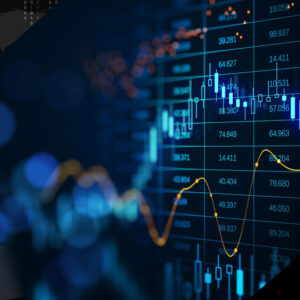The global trade industry has been able to evolve substantially over the past two decades as technology makes it easier for companies to conduct business beyond their borders. However, there are still obstacles when it comes to trans-ocean trade because of issues such as distance, currencies and more. Jason Simon, an expert in FinTech and eCommerce, offers insight into how Asia and Latin America are working to overcome those obstacles and what this means for a symbiotic relationship between the two regions moving forward.
Over the past 200 years, the trade relationship between Asia and Latin America has improved significantly, now worth well over $500 billion. Brazil is still the leading trade partner for Asia, but other countries throughout the Latin American market are gaining ground, as well. Brazil, according to research, has accounted for as much as $60 billion worth of Asian goods sold to Asia, Australia and Russia and, as the economies of those countries continue to improve, Brazil has gained additional ground.
Despite the growth, there are still issues with the balance of trade between Latin America and Asia. Explains Simon, “Latin America has a major trade deficit with Asia that now stands at over $100 billion. Additionally, commodities for manufactures represent the largest segment of trade, but Latin America is more focused on natural resource trade. This leads to a discrepancy in what Latin America can import from Asia, which has a more diversified portfolio of export options.”
It isn’t uncommon for there to be a certain imbalance in trade levels between two regions; however, the current system is detrimental to the sustainability of the Latin America region. A more evenly-maintained trade balance would boost the Latin American countries’ economies more, which is something the region is desperately trying to foster. However, as the power struggle for trade dominance continues, the ability to negotiate more balanced relationships suffers.
Because of that imbalance, Latin America isn’t able to spend as much on infrastructure as it would like. 60% of the roads in the region are still unpaved, compared to 46% in Asia’s emerging economies, and this lack of development adds to the global trade difficulties faced by Latin America. Countries in the region are now working to improve their infrastructures, creating policies that focus entirely on internal development to give them more access to global trade.
One area that could help offset the difference and provide a fairer trade relationship is tourism. “Tourist arrivals to Latin American countries increased by 6.8%, on average, over an 11-year period through 2016,” says Simon. “China has rapidly become the leading source of global travel, with the country’s outbound tourism market seeing a 12% increase just in 2016. That resulted in a total outbound tourism expense of approximately $261 billion, with more increases continuing.”
Additionally, improvements made to the air sector will help, as well. Aircraft technology has improved tremendously in recent years, especially in terms of fuel efficiency, which makes it easier and more feasible to offer quicker, more direct links between regions, such as Asia and Latin America. New air routes are being added to bring the regions even closer together and, although a suspension was forced by COVID-19, the air sector is beginning to get back on track and is starting to open new routes once again.
As long as Latin America stays focused on creating policies to enhance its infrastructure and technology continues to improve to allow more efficient links, Latin America and Asia will be able to strengthen their trade relationship. As development in China evolves, this will give Latin America a platform upon which to enhance its economic relationship with Asia, as well.



 Bitcoin
Bitcoin  Ethereum
Ethereum  Tether
Tether  Solana
Solana  USDC
USDC  Lido Staked Ether
Lido Staked Ether  XRP
XRP  Dogecoin
Dogecoin  Toncoin
Toncoin  Cardano
Cardano  Shiba Inu
Shiba Inu  Avalanche
Avalanche  Wrapped Bitcoin
Wrapped Bitcoin  TRON
TRON  Bitcoin Cash
Bitcoin Cash  Polkadot
Polkadot  Chainlink
Chainlink  Internet Computer
Internet Computer  Polygon
Polygon  Litecoin
Litecoin  NEAR Protocol
NEAR Protocol  Uniswap
Uniswap  LEO Token
LEO Token  Dai
Dai  Aptos
Aptos  Ethereum Classic
Ethereum Classic  Mantle
Mantle  Stacks
Stacks  First Digital USD
First Digital USD  Filecoin
Filecoin  OKB
OKB  Cronos
Cronos  Stellar
Stellar  Cosmos Hub
Cosmos Hub  Renzo Restaked ETH
Renzo Restaked ETH  Render
Render  Arbitrum
Arbitrum  dogwifhat
dogwifhat  Immutable
Immutable  Bittensor
Bittensor  Hedera
Hedera  Maker
Maker  Injective
Injective  The Graph
The Graph  Optimism
Optimism  Ethena USDe
Ethena USDe  Wrapped eETH
Wrapped eETH